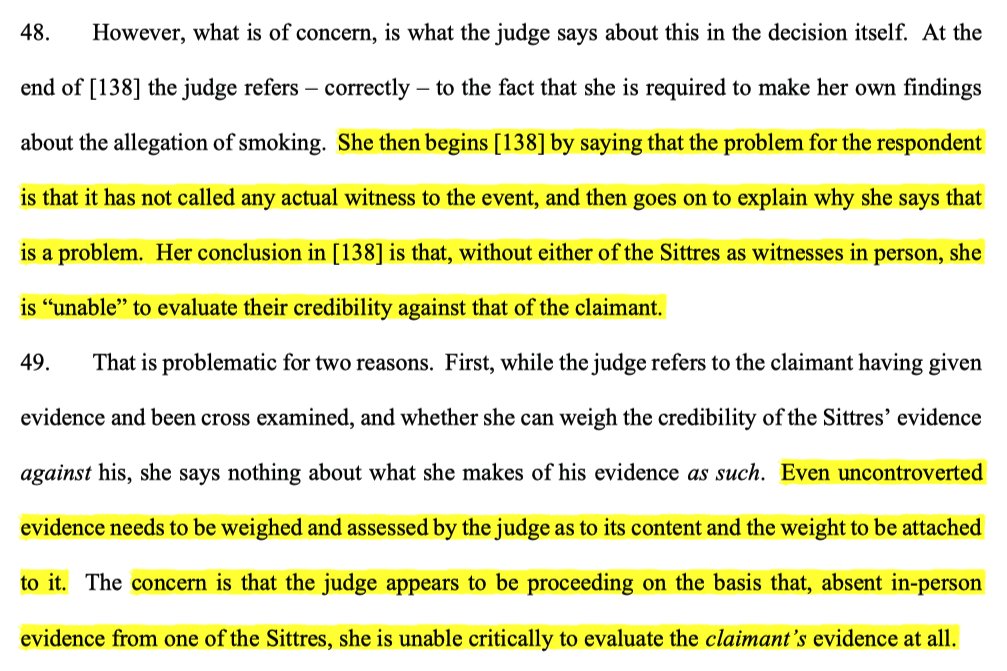
1/ Hovis v Louton: EAT makes clear ET can reject wrongful dismissal claim in conduct case even where R's witnesses to the conduct don't give evidence at the ET. There can still be evaluation of the credibility of internal evidence.
assets.publishing.service.gov.uk/media/619b9d3d…
#ukemplaw
assets.publishing.service.gov.uk/media/619b9d3d…
#ukemplaw
2/ L was a delivery driver. His manager & manager's wife said they spotted him on the motorway & that he was smoking whilst driving during work. An internal disciplinary found this to be so & L was dismissed. He brought unfair & wrongful dismissal claims.
3/ L's unfair dismissal claim failed at the ET, but it allowed his wrongful claim because he gave evidence denying he had been smoking & the manager & his wife didn't give evidence to the ET. Hovis appealed that decision. The EAT allowed the appeal.
4/ The EAT noted that during the disciplinary process there was evidence to establish the manager/wife & L did pass each other & there was also statement evidence from the manager/wife as to what they say they saw.
5/ The EAT noted that whilst the standard of proof for wrongful dismissal is balance of probabilities, the burden on the party making the allegation is, in effect, a tie breaker when the evidence is evenly matched & there's no way to decide. There the party with the burden loses. 

6/ In support of that proposition, HHJ Auerbach set out excerpts from Morris v London Iron & Steel; Stephens v Cannon & Verlander v Devon Waste Management (see the excerpts below). 





7/ Whilst the grounds to challenge on appeal a 1st instance judge's findings of fact are narrow, the EAT noted they included a failure to consider "at all" evidence of a particular type, noting that no hearsay or documentary evidence rule applies to the ET. 

8/ Whilst the question of what weight to give to evidence not given under oath before the ET but given instead to an internal disciplinary hearing was a matter for the ET itself, the EJ here erred in not considering that evidence at all in determining the wrongful dismissal claim
9/ As the EAT noted, the EJ appeared to proceed on the basis that she couldn't even critically evaluate the credibility of L's denial of smoking in the absence of witness evidence from the relevant people at Hovis, nor did the EJ think she could evaluate their evidence absent XX. 



10/ The appeal was thus allowed. The wrongful dismissal claim was remitted to a different judge so that the parties can be confident it was viewed "with a fresh eye" (most EAT remissions seem to be to fresh ETs now, mainly for this 2nd bite of the cherry avoidance).
• • •
Missing some Tweet in this thread? You can try to
force a refresh









